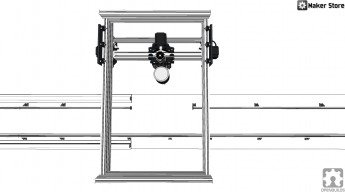Modified OX CNC for Mitre Cutting (Picture Framing)
Discussion in 'CNC Mills/Routers' started by robbell, Jul 19, 2015.
Cancelled - Modified OX CNC for Mitre Cutting (Picture Framing)
Discussion in 'CNC Mills/Routers' started by robbell, Jul 19, 2015.
Creating a CNC mitre (45°) cutter, for picture frame cutting. Starting with an OX, but inverting various parts and adding a material table, with a stepper-controlled measuring guide.
